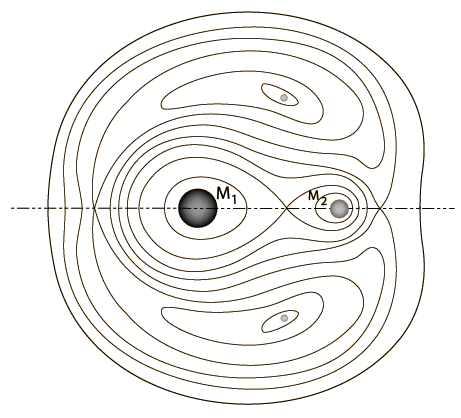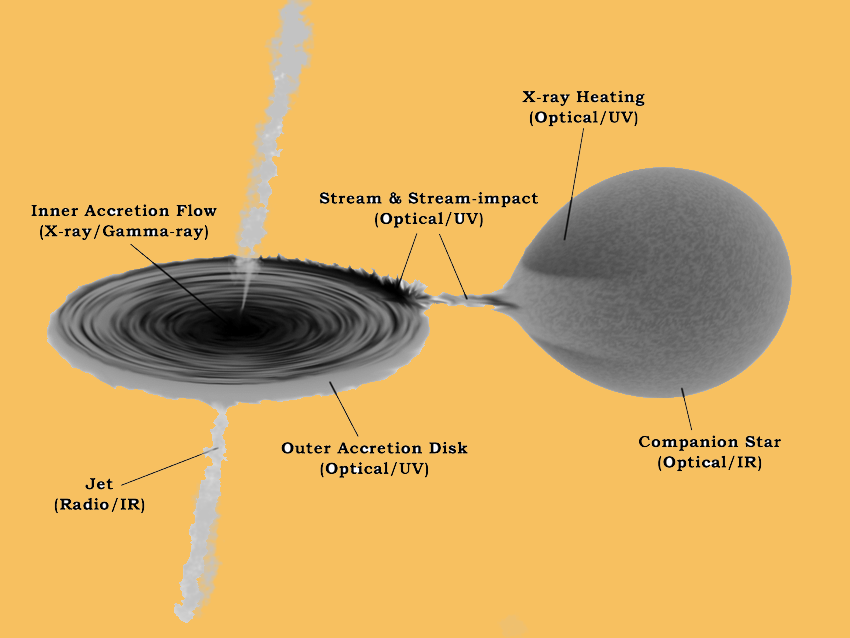
L'article anomenat "A possible planet candidate in an external galaxy detected through X-ray transit", és la versió definitiva i actualitzada d'un altre article semblant escrit i publicat el setembre de l'any 2020 per MINRAS. Aquest últim seria la preimpressió i el més nou, publicat un any després, el novembre de 2021, per Nature Astronomy, recull les dades aconseguides per Rosanne Di Stefano, una instructora en astronomia, sobre el descobriment del planeta M51-ULS-1, de manera més argumentada, simplificada i corregida, per tal que tots puguem entendre aquest descobriment revolucionari en el camp de l'astronomia.
Doncs bé, aquest article parla sobre el descobriment que va fer aquesta senyora del planeta M51-ULS-1. Per començar, explicaré que vol dir cada lletra d'aquest nom, el qual, com el de tots els exoplanetes que es descobreixen, els nomenen a la Unió Internacional Astronòmica:
Bé, una vegada sabem d'on prové el nom de l'objecte a tractar, procediré a analitzar i resumir l'article. M51-ULS-1 va ser descobert per Rossane i el seu equip de set persones més fa a penes un any. Aquest exoplaneta extragalàctic que està a 23 milions d'anys llum de la Via Làctia, o l'equivalent a la unitat astronòmica 8,3 parsecs: es localitza en un sistema binari anomenat M51-ULS-1, ubicat a la galàxia espiral Messier 51. Tindria una mida similar al de Saturn i orbitaria dos cossos: una estrella de neutrons o un forat negre i una supergegant blava.
A la primera pàgina s'explica com va ser possible el descobriment de l'exoplaneta. Aquest seria molt difícil descobrir-lo pels mètodes que s'utilitzen normalment per a descobrir exoplanetes més propers, tots ells de la Via Làctia. Seria difícil o imposible, ja que la llunyania dona problemes a recursos com:
És per això que aquest equip d'astrònoms va buscar l'alternativa per evitar aquest problema, analitzant el trànsit de l'exoplaneta, però en comptes del lluminós, el dels raigs X, per la seva característica física de no desviar o desviar molt poc els fotons dels seus raigs. Això ho van aconseguir fent ús de dos satèl·lits o telescopis espacials, el Chandra, de la NASA i XMM-Newton de l'ESA European Space Agency, aquests són molt potents, y estan dissenyats per detectar supernoves, objectes molt calents a milions de graus, i raigs X molt potents. Doncs bé, aquests dos telescopis van detectar un punt brillant, procedent de l'exoplaneta, que durant tres hores seguides desapareixia, deduint que es tractava d'un exoplaneta probablement a fora de la Via Làctia.
Però, com és probable que aquest sistema que estem analitzant ens proporcioni una font de raigs X tan potent? Doncs bé, això s'explica a partir de la pàgina cinc. Ens diu que aquestes fonts de raigs van condicionades pels cossos que orbita M51-ULS-1. En primer lloc tenim una estrella de neutrons, que té característiques semblants a les d'un forat negre, ja que és una zona plena completament d'espai buit, la qual està constantment absorbint tota la matèria per a no deixar espais buits, a més, la seva temperatura sol estar en els 10.000 graus centígrads. Llavors, en el sistema binari d'aquest planeta, hi ha la presència d'una d'aquestes estrelles de neutrons i també hi ha una supergegant blava. Les dues disposen de tal força de la gravetat que constantment estan absorbint la matèria, el qual provoca que les temperatures de 10.000 graus augmentin fins a 2.000.000 de graus. Gràcies a aquestes temperatures, es genera una font gegant de raigs X, en aquest article anomenats sempre XRS o X-Ray-Sources a causa dels salts dels electrons per la temperatura assolida. També, a causa d'aquest comportament dels electrons, es forma una zona anomenada zona d'acreció, la qual es queda amb pocs electrons al pas del temps.
Per acabar, més endavant a l'article també es menciona la gran utilitat del diagrama H - R (Hertzsprung-Russell). Aquest van veure que no era normal, ja que la temperatura que indicava anava disminuint. El gràfic tenia representada la lluminositat en l'eix y i el tipus d'estrella en l'eix x. L'equip va relacionar els paràmetres de la lluminositat amb la temperatura, identificant una relació entre tots dos. És per això que a partir d'aquest diagrama es va poder descobrir, a part de les magnituds que ja té representats, el tamany i la composició de l'estrella, la seva longitud d'ona i la temperatura. A l'article també es defineix el sistema amb uns anomenats "Punts de Larange". Bàsicament són dos punts, en els que un gira sobre un altre que està en equilibri. Aquests són punts estables o metaestables en l'espai on les forces d'aquest es contraresten i per tant tenen l'absència de forces centrífugues i gravitacionals, els punts són L1 fins L5.
Pel que fa a la meva opinió sobre l'article en comparació a l'anterior, penso que està bé que aquests es vagin actualitzant, per tal de perfeccionar els coneixements de la ciència a mesura que anem fent descobriments, ja que aquesta ha d'estar sempre sotmesa a crítica i ha d'evolucionar. En aquest cas el segon article està més complet, afegint temes i dades que en l'anterior no se sabien encara. Durant les 22 pàgines es parla sobre temes com: que és M51-ULS-1, quines característiques té i on s'ubica, els seus raigs X i les seves propietats, la variabilitat intrínseca, el mètode de trànsit, caigudes relacionades amb l'acreció, l'esdeveniment del trànsit de tres hores i les seves particularitats, l'òrbita de la massa en trànsit i les seves implicacions, poblacions galàctiques de planetes i perspectives de futures observacions i la pregunta de si es tracta d'una estrella nana marró o blanca. A més, l'article també compta amb una sèrie de gràfics, imatges i taules que ajuden a entendre el tema. Per altra banda, com a punts negatius per als dos articles, penso que l'article podria estar encara més resumit i ben estructurat, podria definir algunes paraules tècniques i per part de Nature Astronomy, es podria fer una traducció al castellà, tot i que es pot llegir igualment.
The article called "A possible planet candidate in an external galaxy detected through X-ray transit", is the definitive and updated version of another similar article written and published in September 2020 by MINRAS. The latter would be the prepress and the newest, published a year later, in November 2021, by Nature Astronomy, collects data obtained by Rosanne Di Stefano, an astronomy instructor, on the discovery of the planet M51-ULS-1, from in a more argued, simplified, and corrected way, so that we can all understand this revolutionary discovery in the field of astronomy.
Well, this article talks about the discovery that this lady from the planet M51-ULS-1 made. To begin, I will explain what each letter of this name means, which, like that of all the exoplanets that are discovered, is named in the International Astronomical Union:
Well, once we know where the name of the object to be treated comes from, I will proceed to analyze and summarize the article. M51-ULS-1 was discovered by Rossane and his team of seven more people just a year ago. This extragalactic exoplanet that is 23 million light-years from the Milky Way, or the equivalent of the astronomical unit 8.3 parsecs: is located in a binary system called M51-ULS-1, located in the spiral galaxy Messier 51 It would be similar in size to Saturn and orbit two bodies: a neutron star or black hole and a blue supergiant.
The first page explains how the discovery of the exoplanet was possible. This would be very difficult to discover due to the methods normally used to discover nearby exoplanets, all of them from the Milky Way. It would be difficult or impossible, as distance gives problems to resources such as:
That is why this team of astronomers looked for the alternative to avoid this problem, analyzing the transit of the exoplanet, but instead of the luminous one, the one of the X-rays, by its physical characteristic of not deviating or deviating very little the photons of its rays. They achieved this by using two satellites or space telescopes, Chandra, from NASA and XMM-Newton from ESA European Space Agency, these are very powerful, and are designed to detect supernovae, very hot objects in millions. of degrees, and very powerful X-rays. Well, these two telescopes detected a bright spot, coming from the exoplanet, which for three hours in a row disappeared, deducing that it was an exoplanet probably outside the Milky Way.
But how is it likely that this system we are analyzing provides us with such a powerful X-ray source? Well, that is explained from page five. He tells us that these light sources are conditioned by the bodies orbiting M51-ULS-1. First we have a neutron star, which has characteristics similar to those of a black hole, as it is an area completely filled with empty space, which is constantly absorbing all matter so as not to leave empty spaces, in addition , its temperature is usually in the 10,000 degrees Celsius. Then, in the binary system of this planet, there is the presence of one of these neutron stars and there is also a blue supergiant. Both have such a force of gravity that they are constantly absorbing matter, which causes temperatures of 10,000 degrees to rise to 2,000,000 degrees. Thanks to these temperatures, a giant source of X-rays is generated, in this article always called XRS or X-Ray-Sources due to the jumps of the electrons by the reached temperature. Also, due to this behavior of the electrons, an area called the accretion zone is formed, which is left with few electrons over time.
Finally, later in the article the great utility of the H - R diagram (Hertzsprung-Russell) is also mentioned. They saw that it was not normal, as the temperature indicated was decreasing. The graph represented the luminosity on the y-axis and the type of star on the x-axis. The team related the parameters of luminosity to temperature, identifying a relationship between the two. That is why from this diagram it was possible to discover, apart from the magnitudes it already has represented, the size and composition of the star, its wavelength and temperature. The article also defines the system with some so-called "Orange Points". They are basically two points, at which one rotates over another that is in balance. These are stable or metastable points in space where its forces are opposed and therefore have the absence of centrifugal and gravitational forces, the points are L1 to L5.
As for my opinion on the article compared to the previous one, I think it is good that these are updated, in order to perfect the knowledge of science as we make discoveries, as it must be always subject to criticism and must evolve. In this case the second article is more complete, adding topics and data that in the previous one were not yet known. During the 22 pages we talk about topics such as: what is M51-ULS-1, what are its characteristics and where is it located, its X-rays and its properties, intrinsic variability, the method of transit, falls related to the accretion, the three-hour transit event and its peculiarities, the orbit of the mass in transit and its implications, galactic populations of planets and prospects for future observations and the question of whether it is a brown dwarf star or white. In addition, the article also features a series of graphs, images, and tables that help you understand the topic. On the other hand, as negative points for both articles, I think the article could be even more summarized and well structured, could define some technical words and by Nature Astronomy, a translation into Spanish could be done, although it can be read as well.

